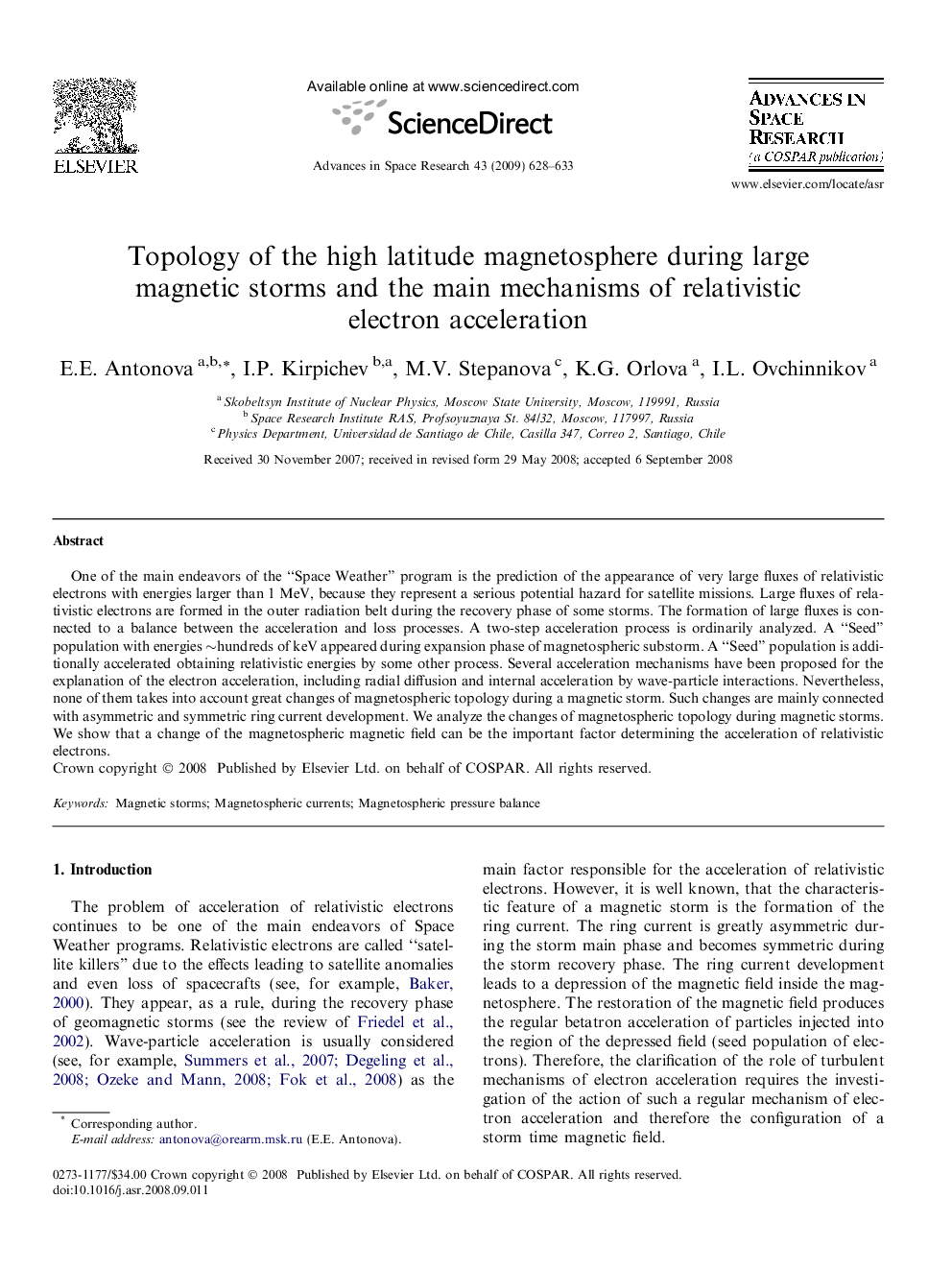| Article ID | Journal | Published Year | Pages | File Type |
|---|---|---|---|---|
| 1766438 | Advances in Space Research | 2009 | 6 Pages |
Abstract
One of the main endeavors of the “Space Weather” program is the prediction of the appearance of very large fluxes of relativistic electrons with energies larger than 1Â MeV, because they represent a serious potential hazard for satellite missions. Large fluxes of relativistic electrons are formed in the outer radiation belt during the recovery phase of some storms. The formation of large fluxes is connected to a balance between the acceleration and loss processes. A two-step acceleration process is ordinarily analyzed. A “Seed” population with energies â¼hundreds of keV appeared during expansion phase of magnetospheric substorm. A “Seed” population is additionally accelerated obtaining relativistic energies by some other process. Several acceleration mechanisms have been proposed for the explanation of the electron acceleration, including radial diffusion and internal acceleration by wave-particle interactions. Nevertheless, none of them takes into account great changes of magnetospheric topology during a magnetic storm. Such changes are mainly connected with asymmetric and symmetric ring current development. We analyze the changes of magnetospheric topology during magnetic storms. We show that a change of the magnetospheric magnetic field can be the important factor determining the acceleration of relativistic electrons.
Keywords
Related Topics
Physical Sciences and Engineering
Earth and Planetary Sciences
Space and Planetary Science
Authors
E.E. Antonova, I.P. Kirpichev, M.V. Stepanova, K.G. Orlova, I.L. Ovchinnikov,
